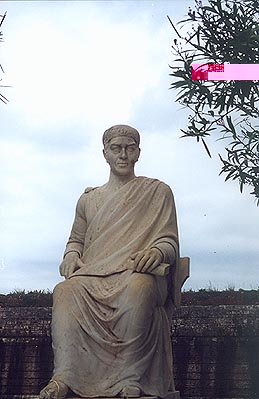
The Guilford Project
http://www.bl.uk/collections/guilford.html
Frederick North, Governor of Ceylon 1798-1805

Frederick North, 5th Earl of Guilford was the third and youngest son of Lord North, Prime Minister from 1770 to 1782. An enthusiastic and eccentric devotee of Greek and Italian culture - like his contemporary, Lord Byron - he unexpectedly inherited the earldom in 1817, following the early deaths of his two elder brothers. In his youth, North studied at Eton and Christ Church, Oxford, and from 1792 to 1794 he represented Banbury in the House of Commons, but he lived much of his life abroad. Owing to ill health, he spent most of his childhood in continental health resorts and as an adult he travelled widely in Europe and the Near East. He was also Secretary of State to the Viceroy of Corsica (1795-96) and Governor-General of Ceylon (1798-1805). From 1815, Guilford ardently promoted his scheme for the foundation of an Ionian university and in 1824 he became the first chancellor when the university was inaugurated on Corfu. He remained a very generous patron of the university until his death in 1827, at the age of 61.
Throughout his life,
Guilford devoted much energy to his large collection of printed books and
manuscripts, which reflected his fascination with Greek and Italian culture.
After his death, the library was broken up and sold in seven sales between 1828
and 1835. At the sale in 1835 the British Museum bought 627 modern Greek printed
books and 43 oriental manuscripts, supplementing its purchase of many thousands
of items at the main auction of Guilford's manuscripts in December 1830. These
manuscript volumes - some of which include considerable numbers of printed items
(no. 7) - are now Add. MSS 8220-8823. They form by far the largest surviving
single group of Guilford's manuscripts, a group augmented by significant
subsequent acquisitions. The core of the collection is a large number of early
modern manuscripts relating to Italian history and European diplomacy, with
particular emphasis on Venice and the Papacy (no. 6). The collection also
includes medieval and Greek manuscripts (nos. 2-4), as well as groups of
manuscripts relating to science (no. 4) and the arts, especially Italian poetry
(no. 5).
The volumes were listed very briefly in only 14 pages of the Catalogue of
Additional Manuscripts 6666-10018. The Guilford Project will describe and index
all the manuscripts in the collection in line with modern standards, making
their contents fully accessible for the first time. 60% of the manuscripts will
be catalogued by the externally-funded Project Officer. The remainder will be
divided between curators in the Department of Manuscripts and two Italian
specialists from Early Printed
Collections who will catalogue all the volumes containing printed items.